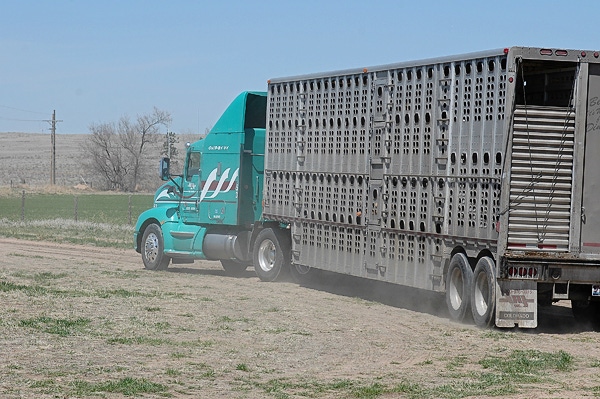There was moderate cash fed cattle trade on good demand in Nebraska and Iowa-Minnesota through Friday afternoon. Dressed sales in these regions brought $6 more than the previous week at $220 per cwt. Elsewhere, trade was shaping up to be a late-day, weekend affair.
March 11, 2016

Calves and stocker-weight cattle traded mostly steady to firm with instances of $5 per cwt higher this week, according to the Agricultural Marketing Service (AMS).
The recent surge of cattle trading off wheat pasture limited gains for yearlings. Yearling feeder cattle weighing more than 800 pounds sold unevenly steady from $3 higher to as much as $4 lower.
“Trading remains most active on 500-750-pound old-crop stocker cattle and hard, lightweight calves mostly throughout the Southeast,” AMS analysts say. “Most top-quality, long-time weaned steers weighing 600 pounds, in lightly-fleshed condition and suitable for grass, are yielding prices well north of $180 per cwt. Many 500-pound steer calves are selling well over $200 per cwt near the major grazing regions.”
Feeder Cattle futures were an average of $3.85 higher week to week.
Strengthening outside markets—including late-week speculation that the bottom might be in for oil—continued to support cash markets.
The Dow Jones Industrial Average was 206 points higher week to week. The broader S&P 500 was up 22 points, closing back above 2000 for the first time since the beginning of the year.
On the other side of the scale, wholesale beef values continued to gain ground.
Choice boxed beef cutout value was $3.08 higher week to week at $224.05 per cwt. Friday afternoon. Select was $3.13 higher at $215.12.
There was moderate cash fed cattle trade on good demand in Nebraska and Iowa-Minnesota through Friday afternoon. Dressed sales in these regions brought $6 more than the previous week at $220 per cwt. Elsewhere, trade was shaping up to be a late-day, weekend affair.
Live Cattle futures closed an average of $1.34 higher week to week across a broad range ($3.45 higher in spot Apr to 52¢ higher).
“One concern remains the disconnect of the June Live Cattle contract compared to April, with the spread of a little more than $11 reflecting some concern of ample supplies coming later,” AMS analysts say.
Nobody running hard in either direction
“While the down trends (futures) have been broken and support established, suggesting a firming up of market prices, resistance is also in place to limit up moves,” cautions Stephen Koontz, agricultural economist at Colorado State University, in the latest In the Cattle Markets. “Live cattle attract a lot of selling interest at $128-130 and feeder cattle at $160-165. I think we’ll have reasons to trade higher in that range—with greening spring grass—and reasons to trade lower in that range—with demand issues and seasonal increases in supply come summer, and we’ll trade that range until the underlying fundamentals change.”
In other words, Koontz isn’t counting on much of a spring rally.
For one thing, he points out that carcass weights continue higher.
“Although marketing rates are increasing, according to the Kansas State University Focus on Feedlots report, steers are staying on feed longer and coming out at heavier weights,” say analysts with the Livestock Marketing Information Center (LMIC), in the latest Livestock Monitor. “Compared to January 2015, steers were on feed 11 days longer on average and came out of the pens 45 pounds heavier (live weight). Average daily gain remains at year-ago rates, however the cost of feed has come down $6.50 per cwt compared to January 2015 at $81.87 per cwt for steers. Coupling the decreased feeding costs with absent or low discounts from the packer for heavyweight cattle, there is no current incentive for the feeder to reverse the long-term trend of producing heavier cattle.”
Then there’s demand.
“The beef demand index, updated with fourth quarter consumption data, showed its first softening in six years,” Koontz explains. “Domestic consumers appear tired of record high retail beef prices. Beef demand has shown strong growth over the past several years, especially in the fourth quarter of 2014 and first quarter of 2015. This demand kick added strength to already-high prices reflecting tight supplies and herd building.”
“Producers should be, now more than ever, investing time and effort to monitor markets carefully and objectively to ensure successful decision-making,” says Nevil Speer, BEEF market analysts, in his latest outlook. “That said, it’s also important to remember that change and challenges also mean new opportunities—the innovators will be rewarded appropriately.”
You might also like:
Photo Gallery: Get to know the 2016 Seedstock 100 operations
Experts say ranching done right improves the environment and wildlife habitat
5 tips to make bull buying easier
About the Author(s)
You May Also Like





